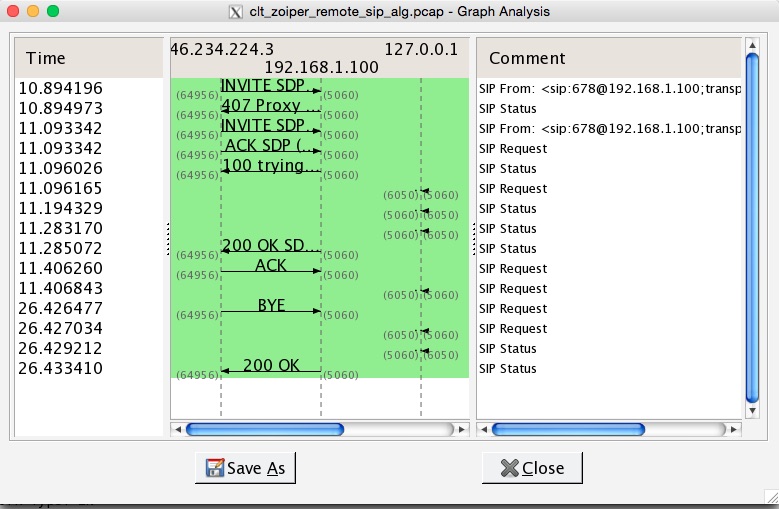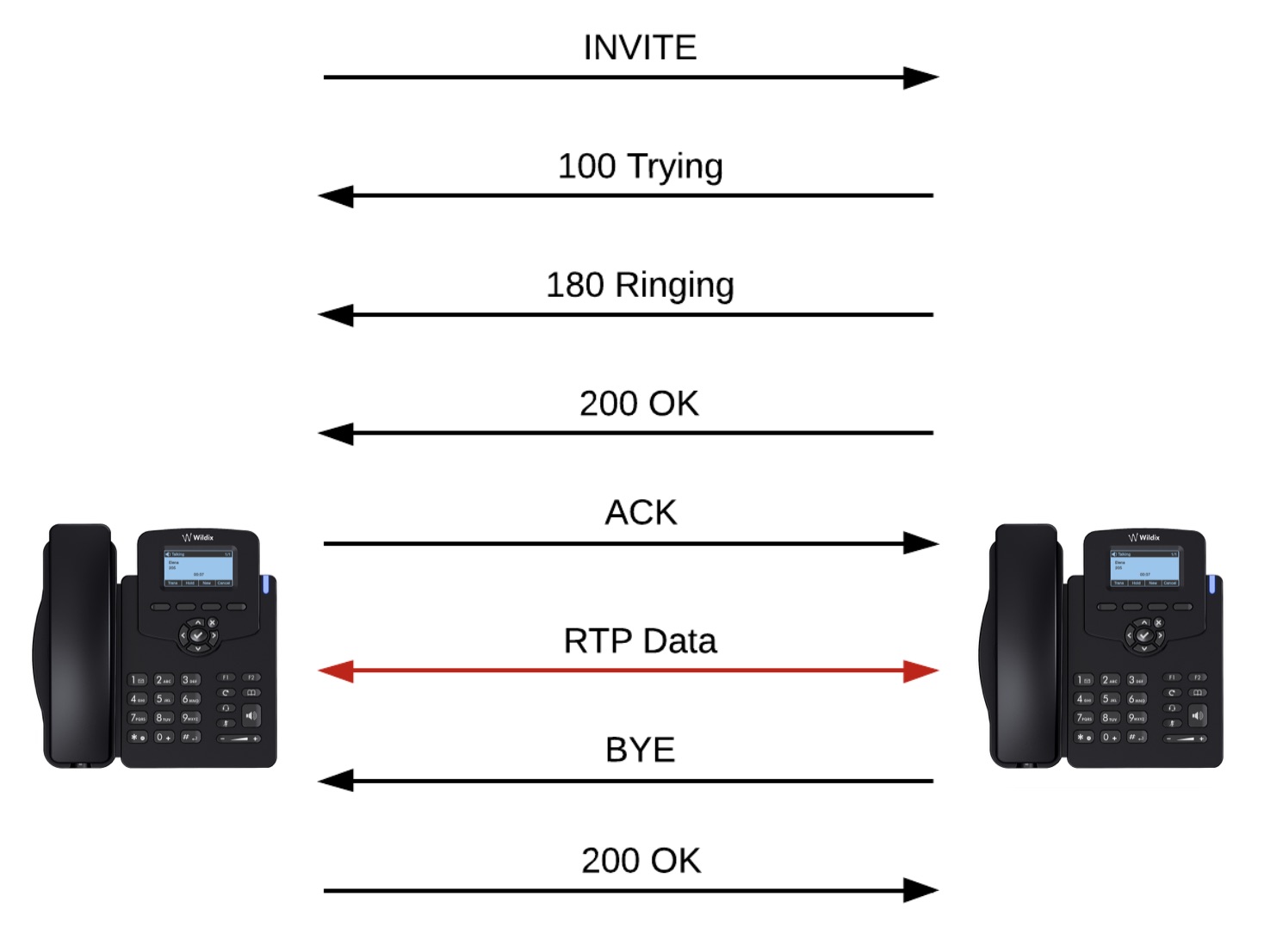 ACK method confirms that an entity has received a final response to an INVITE request. In its turn, BYE method signals termination of a dialog and ends a call.
ACK method confirms that an entity has received a final response to an INVITE request. In its turn, BYE method signals termination of a dialog and ends a call.
Here is the example:
From VoIP to Unified Communications and WebRTC
 ACK method confirms that an entity has received a final response to an INVITE request. In its turn, BYE method signals termination of a dialog and ends a call.
ACK method confirms that an entity has received a final response to an INVITE request. In its turn, BYE method signals termination of a dialog and ends a call.
Here is the example:
 This blog article will be dedicated to SIP and SIP calls. It is meant to provide an introduction for UC Engineers to the main headers and guide through the debugging of the most popular call scenarios that will be described in the next articles.
This blog article will be dedicated to SIP and SIP calls. It is meant to provide an introduction for UC Engineers to the main headers and guide through the debugging of the most popular call scenarios that will be described in the next articles.
As we have seen in SIP and XMPP standards in Unified Communications and Media transfer in Unified Communications – SDP protocol, SIP (Session Initiation Protocol) and SDP-RTP have become the de facto replacement mode for traditional analog and digital lines provided by operators all over the world.
SIP is also the most popular signaling mode to handle VoIP calls.
Being able to understand SIP sessions has become for a Unified Communication Engineer as important as in the past for Telephony Experts to read signaling traces in Q.931 / Q.921 / DS1 / QSIG generated by T1 / E1 PRI – BRI ISDN lines.
 In this blog article we continue to analyze RTP and RTCP and we will see why Jitter Buffer is important and how it affects call quality.
In this blog article we continue to analyze RTP and RTCP and we will see why Jitter Buffer is important and how it affects call quality.
As we saw in the previous article — SDP is not able to transfer media–this task is delegated to protocols such as RTP or RTSP.
RTCP (or Real Time Control Protocol) provides different levels of feedback about the ongoing RTP Stream.
The goal of RTCP is to provide information to the remote endpoint about the quality of service of the ongoing communication.
This is done by providing regular statistics about the amount of packets received, jitter, and packets lost (either via network or discarded by the jitter buffer). Continue reading “RTP, RTCP and Jitter Buffer”